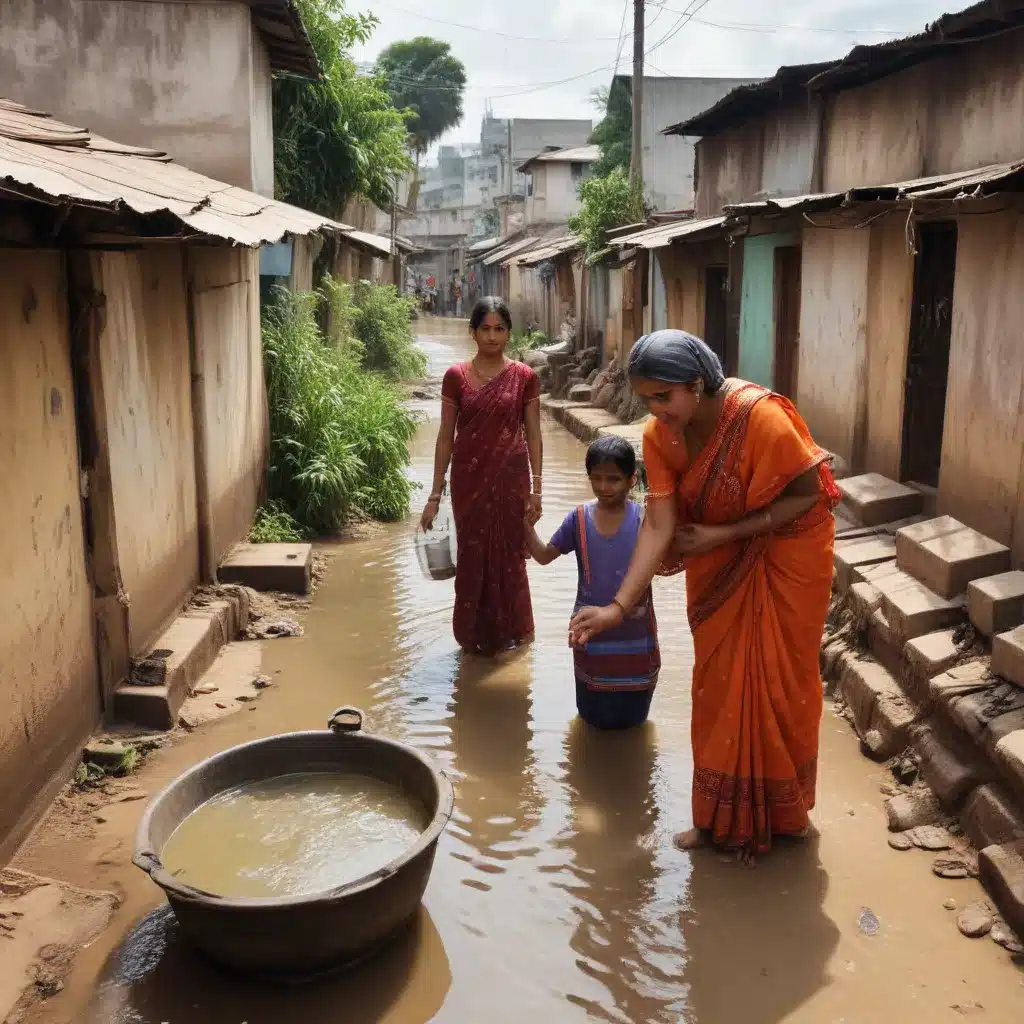
Understanding the Challenges
Hyderabad, the capital city of Telangana, is home to a rapidly growing population, with a significant portion residing in informal settlements or slums. These slums face a multitude of challenges, including inadequate access to clean water, poor sanitation facilities, and vulnerability to natural disasters exacerbated by climate change.
According to the United Nations Human Settlements Programme (UN-Habitat), India’s urban population is projected to increase from 34% in 2018 to 52% by 2050. This rapid urbanization, coupled with the lack of affordable housing options, has led to the proliferation of slums and informal settlements, where residents often lack access to basic services and infrastructure.
The National Adaptation Plan of Pakistan highlights the importance of addressing the vulnerabilities of urban populations, particularly those residing in informal settlements, to the impacts of climate change. Slum dwellers in Hyderabad are disproportionately affected by water scarcity, flooding, and the spread of waterborne diseases, further exacerbating the existing socioeconomic disparities.
Integrated Approaches to Enhance WASH Resilience
To address these pressing challenges, a holistic and integrated approach is required, one that combines disaster risk reduction and climate adaptation strategies within the water, sanitation, and hygiene (WASH) sector. This approach aims to enhance the resilience of WASH systems in Hyderabad’s slums, ensuring that communities can withstand and recover from the impacts of natural disasters and climate change.
Strengthening WASH Infrastructure and Service Delivery
The first step in enhancing WASH resilience is to improve the quality and reliability of water supply and sanitation services in slum communities. This can be achieved through the following measures:
-
Upgrading Water Supply Infrastructure: Invest in the construction and rehabilitation of water distribution networks, ensuring that all households have access to safe and reliable piped water supply. This includes measures to improve water storage, treatment, and distribution to address issues of water scarcity and contamination.
-
Improving Sanitation Facilities: Develop comprehensive sanitation systems, including the construction of community-based toilets, sewerage networks, and wastewater treatment facilities. Prioritize the use of climate-resilient and environmentally sustainable sanitation technologies.
-
Enhancing Service Delivery: Strengthen the capacity of local water and sanitation authorities to effectively manage and maintain WASH infrastructure, ensuring reliable and equitable service delivery to slum communities.
Integrating Disaster Risk Reduction Measures
To enhance the resilience of WASH systems, it is crucial to integrate disaster risk reduction strategies that address the impacts of natural hazards and climate change. Some key interventions include:
-
Flood-Resilient WASH Infrastructure: Incorporate flood-proofing measures in the design and construction of water and sanitation facilities, such as elevating critical infrastructure, installing flood-resistant materials, and improving drainage systems.
-
Early Warning Systems: Develop and integrate early warning systems that can alert slum communities about impending natural disasters, enabling them to take timely action to protect their WASH assets and prepare for emergencies.
-
Contingency Planning and Emergency Response: Establish comprehensive emergency preparedness and response plans that outline clear protocols for the restoration of WASH services during and after disaster events. This includes pre-positioning essential supplies and equipment and training community members on emergency response procedures.
Fostering Community Engagement and Capacity Building
Sustainable WASH resilience cannot be achieved without the active involvement and empowerment of slum communities. Key strategies in this regard include:
-
Community-Based Disaster Risk Management: Engage slum residents in the assessment, planning, and implementation of disaster risk reduction measures, ensuring their needs and perspectives are incorporated.
-
Capacity Building and Training: Provide training and skills development opportunities for slum residents, equipping them with the knowledge and tools to maintain, operate, and manage WASH systems during normal and emergency situations.
-
Livelihood Diversification: Support the diversification of livelihood opportunities in slum communities, reducing their reliance on WASH-related activities and enhancing their overall adaptive capacity.
Strengthening Institutional Coordination and Governance
Effective coordination and governance across various stakeholders, including government agencies, civil society organizations, and the private sector, are crucial for the successful implementation of integrated WASH resilience strategies. Key actions in this regard include:
-
Intersectoral Collaboration: Facilitate collaboration between the WASH sector, disaster management authorities, and climate change adaptation agencies to ensure a holistic and coordinated approach to resilience-building.
-
Policy and Regulatory Frameworks: Develop and strengthen policy and regulatory frameworks that support the integration of disaster risk reduction and climate adaptation measures into WASH planning and implementation.
-
Financing Mechanisms: Explore innovative financing mechanisms, such as public-private partnerships and climate financing, to mobilize the resources required for implementing resilient WASH interventions in slum communities.
Fostering Sustainable and Inclusive WASH Resilience
By adopting this integrated approach, Hyderabad can enhance the resilience of its WASH systems in slum communities, ensuring that residents have access to safe, reliable, and climate-adaptive water and sanitation services. This, in turn, will contribute to improved public health, environmental sustainability, and overall community well-being, particularly for the most vulnerable populations.
Through the World Bank’s Country Partnership Framework for India, the government can leverage resources and technical expertise to support the implementation of these integrated WASH resilience strategies, ultimately creating a more equitable and sustainable future for Hyderabad’s slum dwellers.
Conclusion
Enhancing the resilience of WASH systems in Hyderabad’s slums is a critical and multifaceted challenge that requires a comprehensive, integrated approach. By combining disaster risk reduction and climate adaptation strategies within the WASH sector, the city can work towards ensuring that all residents, regardless of their socioeconomic status, have access to essential water and sanitation services that can withstand the impacts of natural disasters and climate change. This holistic approach, coupled with strong community engagement, institutional coordination, and innovative financing, will be instrumental in creating a more resilient and inclusive future for Hyderabad’s slum communities.

